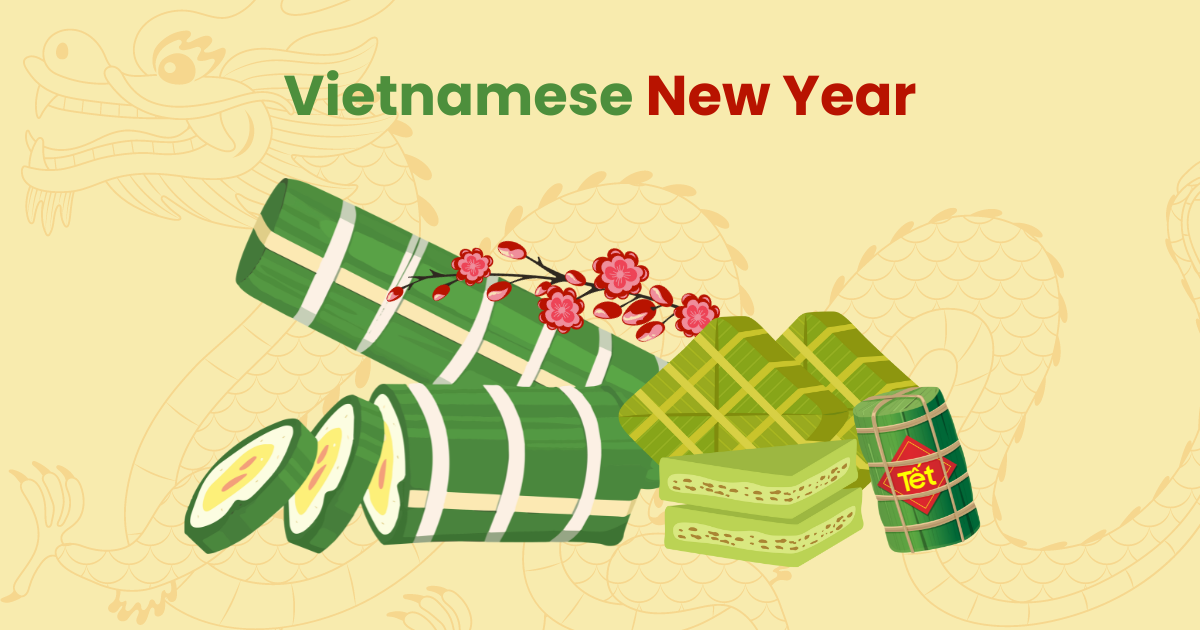So, in less than a month, Vietnam welcomes Tet 2024, the most important and longest holiday. The Lunar New Year, or Tet, is one of the distinctive cultural practices of the Vietnamese people. Tet, a day of reunion, hope, and luck, is the most significant holiday in the Vietnamese calendar.
Although there are many festivals throughout the year, the Vietnamese New Year’s celebration is a sacred festival for all Vietnamese people. There is an idiom that says: Father’s death anniversary is hungry for three days of Tet, referring to the special importance of Tet to the beliefs and spirit of the Vietnamese people. During the three days of Tet, despite poverty, every family tries to have a delicious table, displaying cakes and fruit, especially Square sticky rice cake. Every home you go to, the host invites you to eat with them. And there are more Vietnamese New Year’s traditions and activities to pay attention to. Let’s check it out!
Table of Contents
The True Meaning Of Vietnamese New Year
“Tet Nguyen Dan,” or “The Feast of the First Morning of the First Day,” is what “Tet” is short for. This date has three important meanings: it’s the official birthday of every Vietnamese person, the start of the New Lunar Year, and the arrival of spring.
Origin of Lunar New Year’s Traditions
The origin of the Lunar New Year remains a topic of debate and controversy up to this point. However, the most widely held belief is that Lunar New Year originated entirely in Vietnam before this name was borrowed and applied to Vietnamese New Year.
“The Legend of the Rice Cake” states that Tet celebrations have been a Vietnamese custom dating back to the time of the Hung Kings or before the Northern colonial era.
Meaning Of Vietnamese New Year’s Holiday
The Lunar New Year, according to the Vietnamese people, is a time for family reunions as well as a symbol of the relationship between humans and gods and heaven and earth. In keeping with the idea of remembering the source when drinking water, this is also the time when the entire family pays respect to their ancestors by serving sacrifices to the family altar.
The primary meaning of the Lunar New Year is to bid the old year farewell and greet the new one with wishes for health, fertility, wind, and favorable weather. It is a holiday with deep symbolic meaning.
Important Vietnamese New Year’s Rituals
There are many special rituals during Tet, but below are the most important norms that almost every home needs to perform.
1/ The Kitchen God Returns to Heaven
Vietnamese New Year’s customs state that families will hold a ceremony on the 23rd day of the 23rd lunar month to send the Kitchen God back to heaven, where they will report to the Jade Emperor on all the homeowner’s actions. Everyone will have to cook rice, clean the kitchen completely, and purchase goldfish to worship in order to send Mr. Cong and Mr. Tao (their Vietnamese names) to heaven on this day.
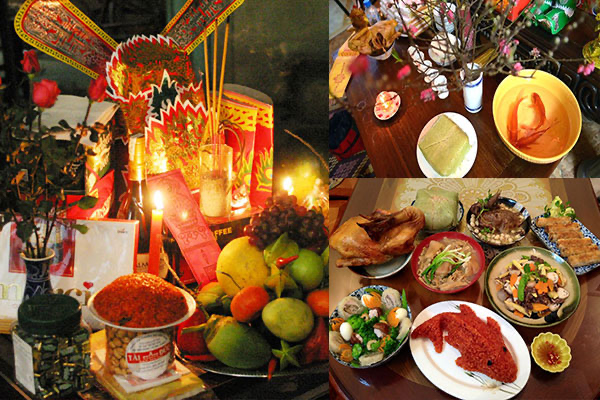
2/ Visit Your Ancestors’ Graves
After honoring Mr Cong and Mr Tao, it is customary to visit and tidy the graves of ancestors and grandparents on Tet. This is a common practice that shows gratitude, respect, and filial piety for one’s parents and departed ancestors.
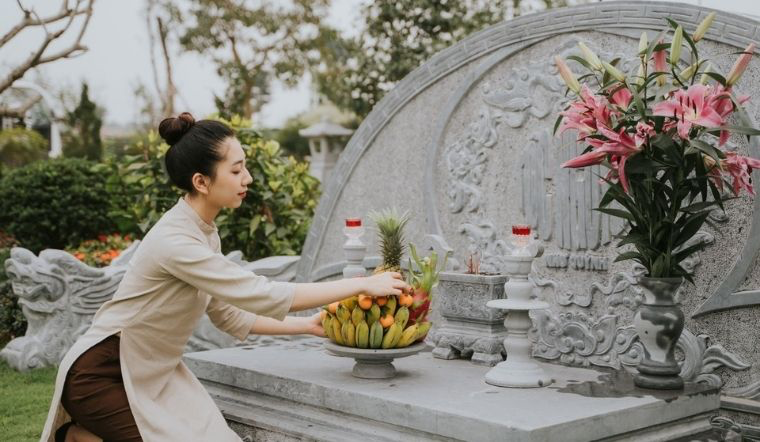
3/ Offerings To The Ancestors
Vietnamese traditional festivities customs place a great deal of importance on year-end offerings. Families will offer a proper tray of food and burn incense on the 30th day of the Lunar New Year to invite the gods and ancestors to join them in celebrating Tet. To celebrate the new year and bid farewell to the previous one while getting back together with family members and grandchildren.
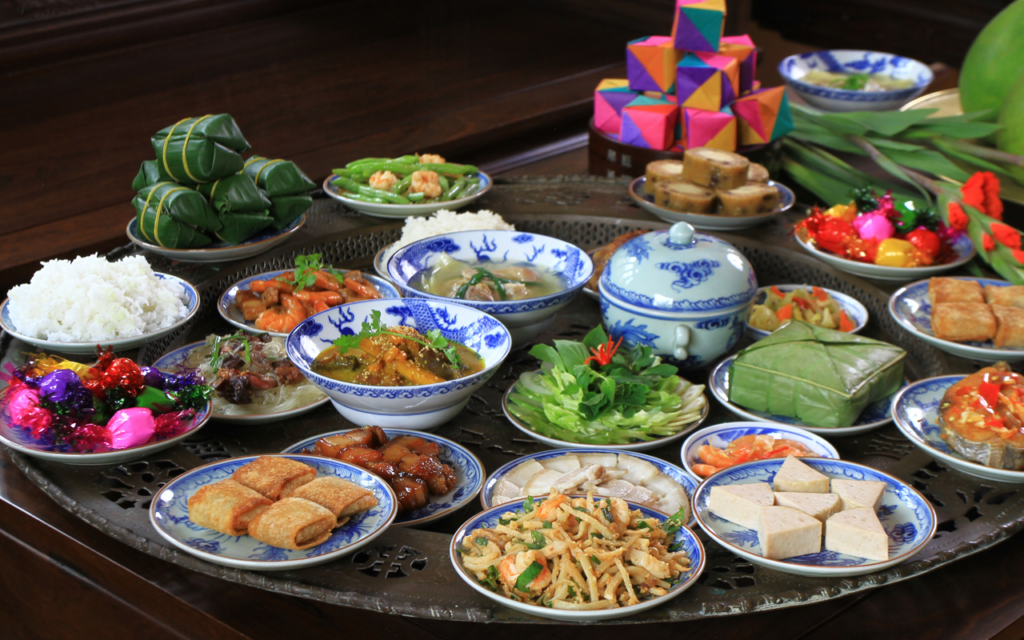
4/ Exchange Greets and Lucky Money
Another Vietnamese New Year’s tradition – People exchange extremely good wishes and lucky money envelopes on Tet days. Children often eat and grow up quickly, study well, and the elderly receive lucky money from their children to celebrate longevity and wish good health. This means bringing good luck, good luck, and repelling evil.
The traditional greeting to wish customers a happy new year is “Happy New Year”. It is customary to at least send a physical or electronic card to the partnership office if the partnership does not require a gift. You can use thousands of free AhaSlides templates or customize your own to suit your requirements to create meaningful and unique greeting templates.

💡Celebrate Vietnamese New Year’s holiday full of engagement and thrills with AhaSlides – the free interactive tool for hosting trivia nights, fun icebreakers, and meetings. Connect everyone remotely with just a click.
5/ Golden Turning Ceremony
The golden transformation ceremony, in addition to being performed on the 3rd day of the Lunar New Year, is also performed from the 4th to the 10th day of the Lunar New Year.
Historian Professor Le Van Lan claims that the idea of ancestor worship is the foundation for the secularization of gold, which is connected to the idea of seeing people from other worlds coexisting with our own. In addition, the golden ceremony serves as a welcoming ceremony for the god of wealth and fortune to return to the family in the hopes of a successful and prosperous business year.

Vietnamese New Year’s Preceding Days
Tet typically falls in late January or early February. However, Tet is celebrated earlier than Tet by the Vietnamese people. Tet preparation activities are a unique and special cultural feature.
Go Shopping In Tet Flower Market
The busiest place before Tet, when everyone shops for new home décor and other items, is the flower market. In addition to traditional New Year’s trees, the flower market is visually appealing with an endless variety of flowers. The most frequently seen displays are peach branches, kumquat pots, and apricot pots. One of the most popular flower displays during Vietnamese Tet is orchids.
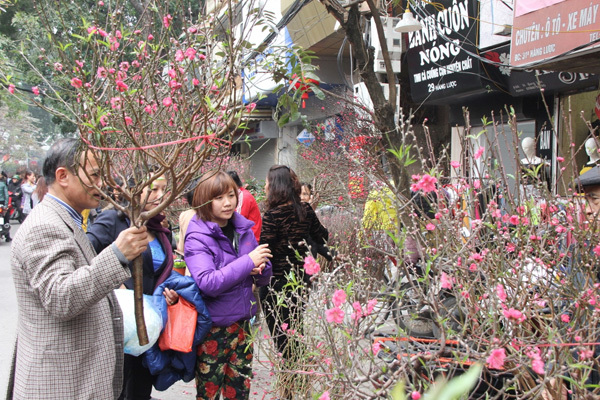
Cook and Wrap Vietnamese New Year’s Traditional Cakes
Not only is wrapping Square sticky rice cake a traditional Vietnamese New Year’s activity, but it has much deeper significance. Family members can become closer by cooking this cuisine together. An indelible memory of Tet is always wrapping this cake and staring at its pot with grandparents. Every child will remember those as their most treasured Tet childhood memories.
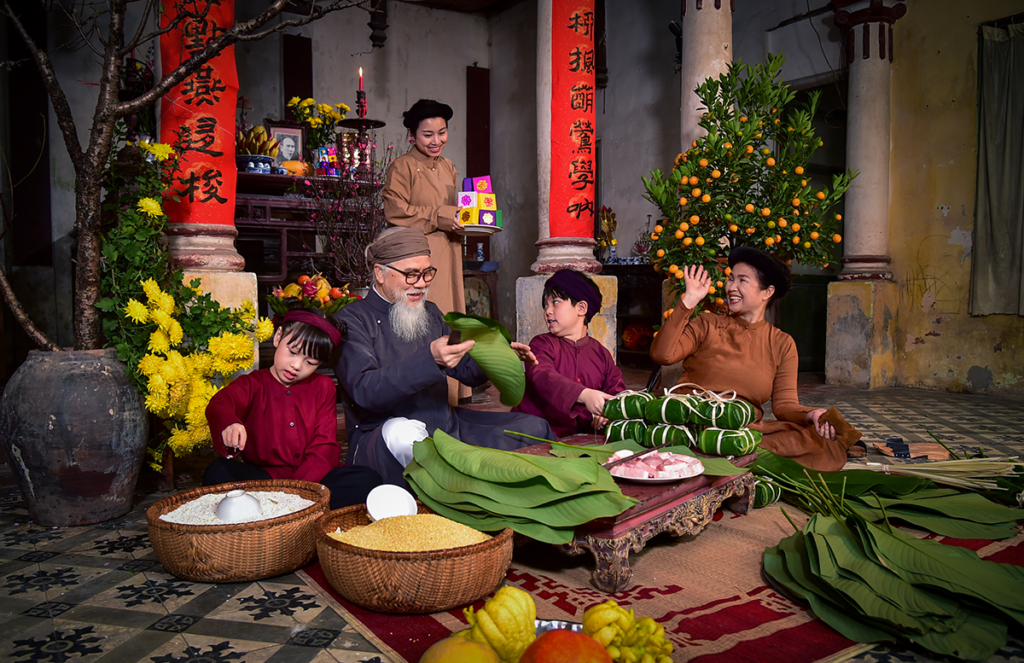
Arrange Fruit Tray
According to popular belief, Tet is a time when ancestors come back to be with their offspring and grandchildren. Thus, in addition to tidying and embellishing the home, the five-fruit tray needs to be meticulously ready for placement on the ancestral altar at all times. Every variety of fruit symbolizes a distinct desire held by the homeowner. Papaya, for instance, is a symbol of abundance and prosperity.
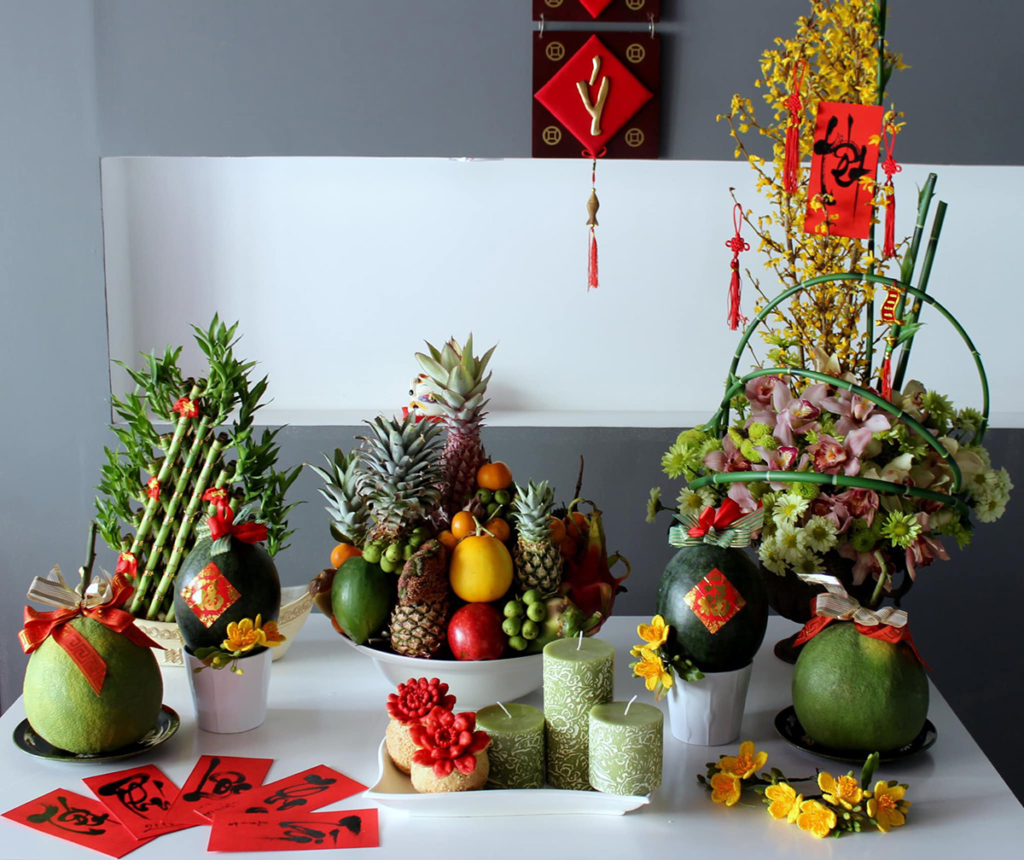
You May Also Like:
- 7+ Lunar New Year Food Traditions Around Asia
- How To Say Happy Lunar New Year In Vietnamese
Travel During The Vietnamese New Year
A distinctive cultural celebration, the Lunar New Year brings large numbers of visitors to Vietnam. Nonetheless, there may be certain difficulties when travelling during this time. Here are some main points to help you leverage your Lunar New Year travel experience:
- Tet can be considered the busiest time in small cities but also the quietest and least crowded time in big cities. Some unique cities with many traditional activities you can visit include Hoi An, Hue, Cao Bang, Moc Chau, and so on.
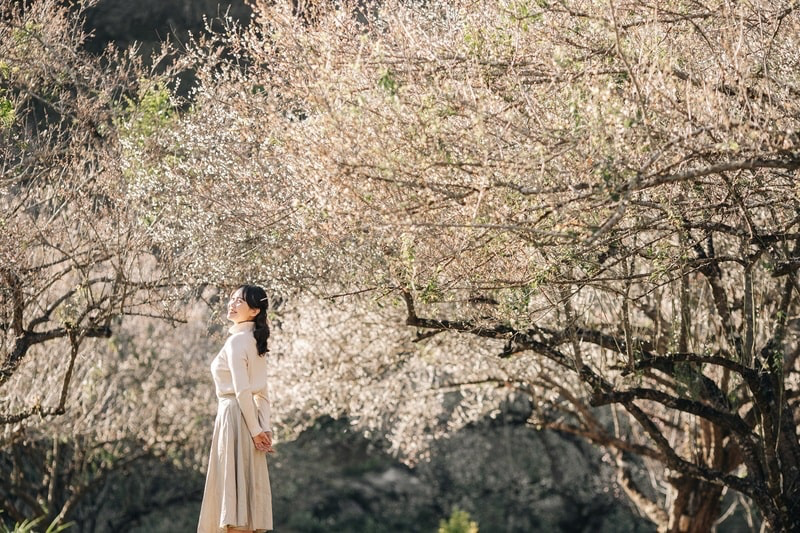
- There won’t be many places to eat or shop during the first few days of Tet because many businesses might be closed.
- It is typical to receive an invitation before visiting a Vietnamese home on New Year’s Eve, as the first visitors of the year are carefully selected to bestow good fortune upon each family.
- During Tet, kind wishes for the Vietnamese New Year are greatly appreciated. In the early days of the new year, don’t forget to greet everyone you meet with a smile and a “Happy Lunar New Year.”
More tips and advice about events? Pick an event that you’re concerned with, and we’ll give you a helping hand!
FAQs:
Is the Vietnamese New Year the same as the Chinese?
Due to their shared calendar, Asian location, and proximity, the two nations share many common beliefs and customs, including grave sweeping, lucky money, and New Year’s wishes. There are variations, though some certainly is a result of inherited customs and cultures.
How long is the Vietnamese New Year?
In Vietnam, Tet typically lasts seven to ten days, the first three of which are the most significant. During these days, there are numerous customary and religious rituals, such as breaking ground, exchanging lucky charms, visiting pagodas, and more.
Ref: KKday
